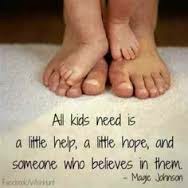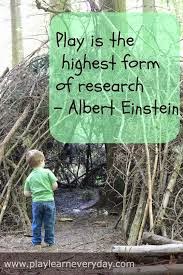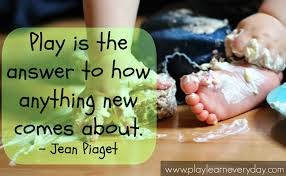Documenting the Learning taking place in the classroom is a HUGE undertaking. It has been one of my greatest challenges this year and I am still trying to figure it out! I have found that using photos and video of student interaction with each other and of materials is a great place to start. After examining the videos of sharing sessions, learning at the Learning Places and student work, I try to create a Learning Story to show how the thinking unfolded. I have found that it is easier to document the Big Ideas as a learning story and use the learning moments as the "process" of how the students "uncovered" the curriculum. This task can be very overwhelming and time-consuming at first. It can also be confusing as to what dialogue, evidence and pieces of work should be used. But, as you experiment with documention, you start to figure out what is important to show and how best to show it. I like Learning Stories because it gives the reader a clear picture of the learning process, the thinking taking place, how the students learn from one another and their opportunity to explore and how they build upon each other's experience/knowledge and connections.
Here is a learning story that developed over quite a few weeks. It shows how our inquiry into rocks developed into a discussion/investigation of living things.
A Learning Story: Rock Inquiry
Many of the students in our classroom were selecting non-fiction books from the library about rocks and minerals. After a short discussion about rocks, I asked the children if they would be interested in having a “Rock Inquiry.” With the students help, we gathered books about rocks, collected rocks from outside and brought in special rocks from home to investigate. After a few days of exploration (students discussing their observations- comparing size, colour, shininess, sorting the rocks into groups, talking about their favourites and why), students were encouraged to write down some “wonderings” they had about rocks. Two students wrote that they wondered if they could grow a rock…
During our sharing circle, J.B and L.E shared their wondering with the class. I asked if there were any other children interested in investigating this wondering with them. The students interested were then asked to make a plan and let me know what materials they felt they would need for growing a rock.
The students decided to plant the rock just like they would a seed. They made the connection that a plant needs the sun, soil and water to grow so they felt that a rock would need the same thing.
After several days watering the rocks planted, the students informed me that the rock was not growing. I asked them why? I asked them to tell me why they thought the rock wasn’t growing. They answered that it needed more time.
During this time, students were also planting different seeds from our Energy/Sun Inquiry. Comparisons began to be made about our plants growing and the lack of growth from our Rock Plant. L.A then read in a book about an experiment to grow rocks using glue, sand and pebbles (it would make sedimentary rock). L.E was once again asked whether he had an answer as to whether he could grow a rock. He suggested that perhaps we needed to grow the rock in a different way but wasn’t sure how. L.A then shared his experiment with the class. A small group of students used his written plan (with the help of the book) with the help of Mrs. Skrok and tried to grow a rock in this new way.
After a week, the students commented once again that the rock wasn’t growing. It was time for us to see if the experiment was successful in producing a rock. Following the instructions from the book, the students and I took apart the plastic cup in hopes to see a rock had grown (formed). Unfortunately, the sand and pebbles crumbled beneath our hands. “The glue isn’t dry yet!” said L.A. “We needed to wait longer!” The class then had a discussion as to whether glue would be important for growing a rock. Unfortunately, the students were not interested in trying this experiment again. Instead,the group discussed options and decided to wait longer to see if their planted rock would grow.
The following week, we once again revisited the wondering. The original planting group thought they either didn’t plant it right or that it is impossible to grow. N.M then said, you can’t grow a rock because it doesn’t have energy! (connection to our energy inquiry). “Can you explain? Do you think we can grow a rock?” I asked.
“No way!” he exclaimed! “You can’t grow a rock because they’re solid. They don’t have roots and they can’t drink water!” Other students began to nod and add “Yeah they’re solid and the roots can’t just bust out of the rocks.” (connecting the idea of growth to our plant inquiry)
N.M-“They can’t get energy from the sun because if rocks can grow, they’d have roots.”
L.E- “Yeah… roots can’t bust out of the rock it is solid. That’s why we are having trouble.”
N.M- “Rocks aren’t a living thing. They can’t move and talk.
E.D-“They can’t eat and drink.”
With guidance, the students began to compare a rock to a plant. Students discussed the idea of moving and talking.
W.L- “ plants are living but they don’t move.”
P.N- “but they start small and grow that is moving.”
Students then discussed whether talk is important for living things. Many students said that animals don’t talk but then quickly changed their mind when J.B reminded them about how dolphins talk to each other in their own language.
Our Rock Inquiry soon evolved into an investigation into Living Things... A NEW INQUIRY BEGAN!





